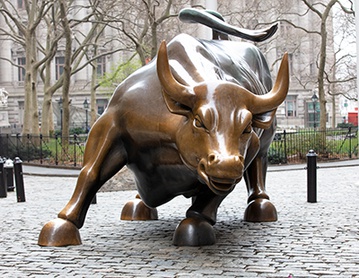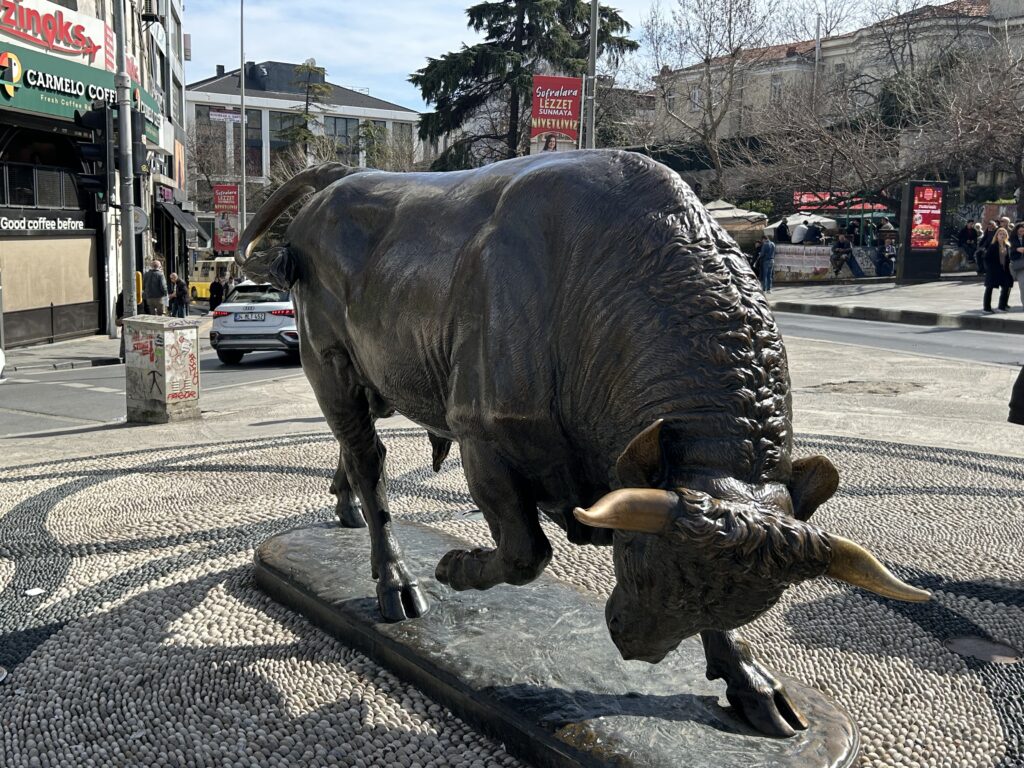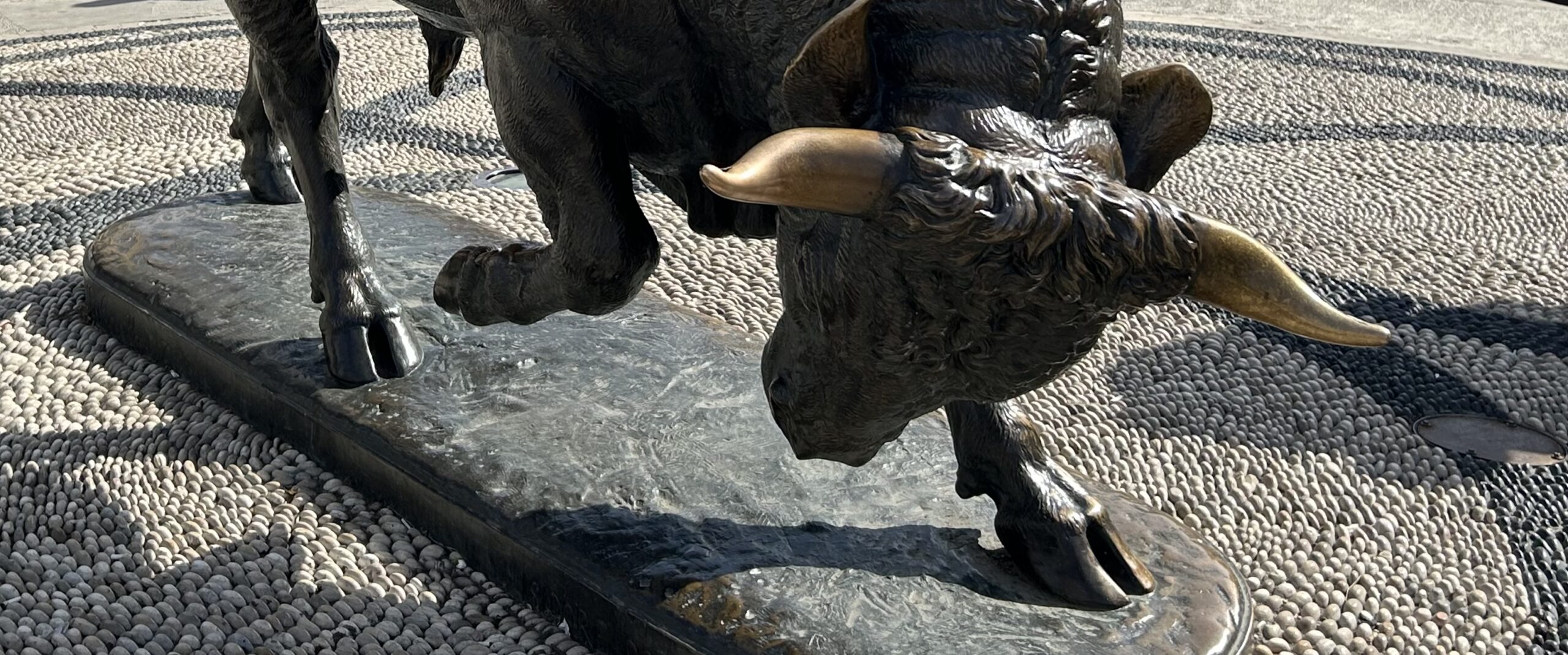There is definitely no Wall Street in Istanbul but there is a charging bull that has a longer history than the famous bull of the Financial District of Manhattan in NYC. The Bull of Wall Street (a.k.a. The Charging Bull) is the work of art of the Italian artist Arturo Di Modica who, following the big stock exchange market crash known as the Black Monday in 1987, brought his sculpture on the back of a truck one evening in 1989 and dropped it illegally in front of the New York Stock Exchange building. It was later installed at Bowling Green after first being removed by NYPD. By that time, the bull of Istanbul was already approximately 125 years old and had been moved around several times among districts of Istanbul on both sides of the Bosphorus.

Source: Wikipedia
Today, the renowned bull of Istanbul is in Kadıköy, on the Asian part of Istanbul, right at the centre of the Altıyol Circus. This is a location where, as the name literally implies in Turkish, six roads meet. Just like the one in NYC, the bull of Kadıköy is a very popular landmark in Istanbul. Taking a photograph of the statue without a surrounding crowd or a child riding on its back is quite a challenge, but not impossible if you have enough patience.

The statue was originally part of a collection of animal statues that were commissioned by Sultan Abdülaziz (r. 1861-1876). They were made by the French sculptor Pierre Louis Rouillard and his team. Unlike the great artist masters of his time, Rouillard had the habit of acknowledging his assistants. Thanks to this, today we know that the bull was the work of art of Isidore Bonheur, possibly with the contribution of master Rouillard himself. It was cast in the Thiebaut Foundry in 1864 and then brought to Istanbul, to be placed in the garden of the Beylerbeyi Palace by the Bosphorus. The statues, some of which are made in marble, were originally ordered for the gardens of the Beylerbeyi and Çırağan palaces. However, they were moved to the Yıldız and Dolmabahçe palaces following the unfortunate demise of the Sultan in 1876. Numerous moves followed in the succeeding decades until it was finally placed in its current location in 1990.
You can learn more about the beautiful Beylerbeyi summer palace, which was the historical setting of Sultan Abdülaziz’s love affair with Empress Eugenie of France, by following the link:
